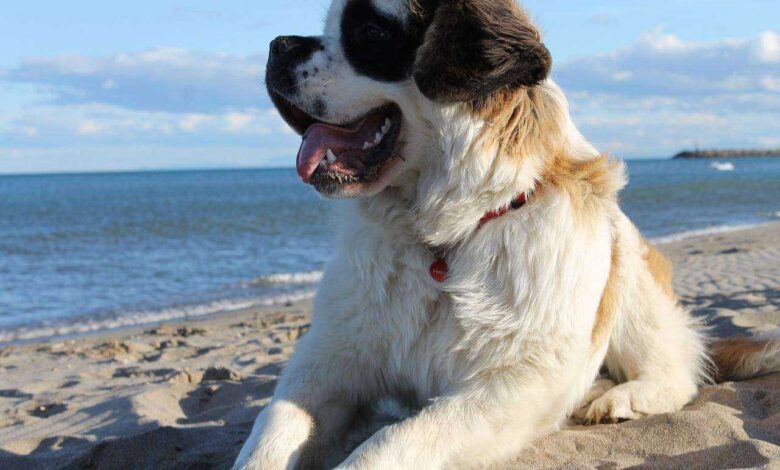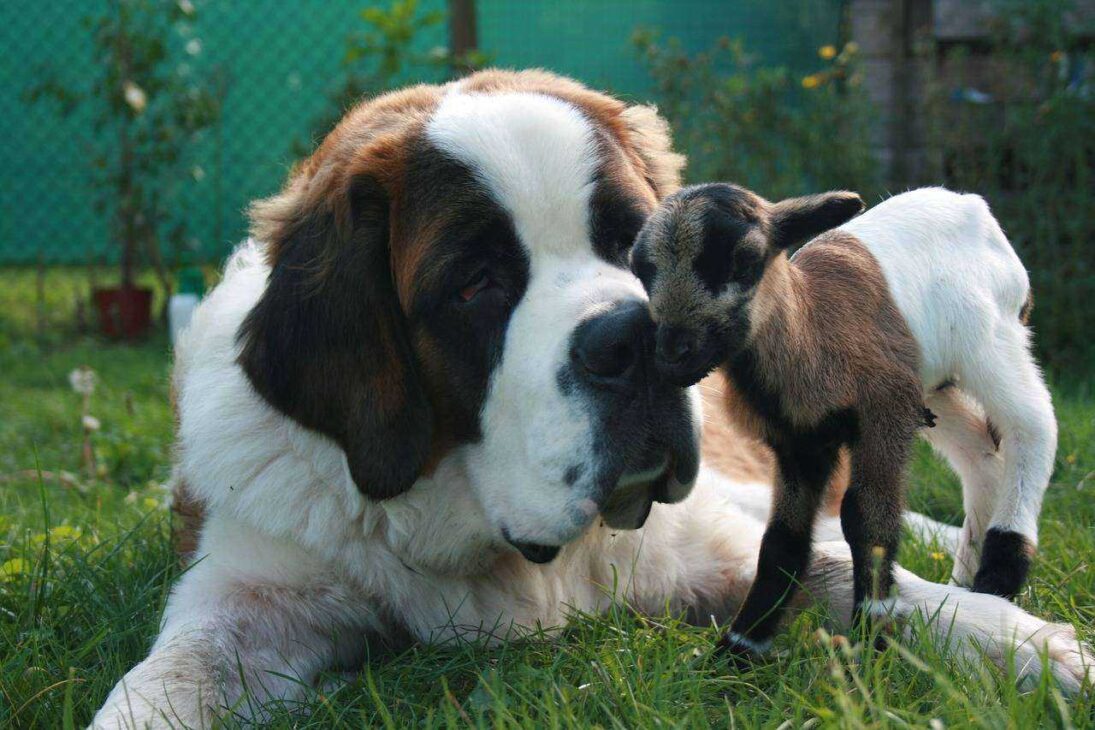Majesty of Saint Bernards: From No 1 Adorable Puppies to Lifesaving Heroes

Welcome to the captivating world of Saint Bernards, where gentle giants and loyal companions await. In this comprehensive guide, we embark on a journey to unravel the majestic allure of these remarkable dogs. From their storied history as Alpine rescuers to their modern roles as therapy dogs and beloved family pets, Saint Bernards enchant us with their immense size, gentle demeanor, and unwavering devotion. Join us as we explore every facet of this extraordinary breed, from finding the perfect puppy to specialized care and training considerations. Whether you’re a seasoned Saint Bernard enthusiast or new to the breed, prepare to be captivated by their charm and inspired by their noble spirit.
Understanding the Saint Bernards Breed
To truly appreciate the magnificence of Saint Bernards, it’s essential to understand their history, physical characteristics, and temperament.
History and Origin:
Originating from the Swiss Alps, Saint Bernards have a rich history dating back centuries. Bred by monks of the Hospice of the Great St. Bernard Pass, these noble dogs were initially used as rescue and guardian animals, saving countless lives in treacherous mountain conditions. Their legacy of courage and compassion continues to inspire admiration worldwide. For more detailed information about the history of Saint Bernards, visit The Saint Bernard Club of America.
The hospice’s isolation, harsh conditions, and frequent avalanches necessitated a breed that could withstand extreme weather and terrain. The Saint Bernard’s origin as a working dog is evident in its strength, endurance, and unwavering loyalty.

Physical Characteristics:
Saint Bernards are instantly recognizable for their massive size and gentle expressions. They possess a sturdy build, with broad heads, expressive eyes, and a thick, weather-resistant coat. Their coat colors range from classic red and white to striking brindle patterns. Websites like The Kennel Club provide detailed breed standards and visual references for aspiring Saint Bernard enthusiasts.
The Saint Bernard’s large frame and muscular build reflect its heritage as a working dog bred for tasks such as pulling carts, guarding property, and, most famously, rescuing lost or injured travelers in the Swiss Alps. The breed’s coat, consisting of a dense, water-resistant outer layer and a soft undercoat, provides insulation against the cold, making them well-suited for Alpine environments.
Finding Your Saint Bernard Companion
When embarking on the journey to bring a Saint Bernard into your family, it’s crucial to find a reputable breeder and consider factors such as temperament, health, and compatibility.
Reputable Breeders:
Finding a reputable Saint Bernard breeder is paramount to ensuring the health and well-being of your future companion. Look for breeders who prioritize responsible breeding practices, health testing, and socialization. Websites like Saint Bernard Club of America provide a list of breeders who adhere to the club’s standards and guidelines.
The importance of choosing a responsible breeder cannot be overstated. Responsible breeders prioritize the health and well-being of their dogs, perform health screenings, and carefully select breeding pairs to produce puppies with sound temperaments and good health. By choosing a reputable breeder, you not only support ethical breeding practices but also increase the likelihood of bringing home a happy, healthy puppy.

Puppies for Sale:
Whether you’re searching for Saint Bernard puppies with pedigree or seeking extra-large dog food for Saint Bernards, reputable breeders offer a range of options to suit your preferences. Ensure that puppies receive proper veterinary care, vaccinations, and early socialization to start them on the right path to becoming well-adjusted companions.
Before purchasing a Saint Bernard puppy, it’s essential to consider factors such as your living situation, activity level, and ability to meet the breed’s specific needs. Saint Bernards require ample space to accommodate their size, regular exercise to maintain their health and prevent obesity, and ongoing socialization and training to ensure they develop into well-behaved companions.
Training Considerations
Training plays a vital role in shaping the behavior and abilities of Saint Bernards, preparing them for various roles and responsibilities.
Dog Training:
Saint Bernards possess a gentle and empathetic nature that makes them excellent candidates for therapy work. Training programs focus on teaching obedience, socialization, and appropriate interactions with diverse populations. Organizations such as Therapy Dogs International and Pet Partners offer certification and training resources for aspiring therapy dog teams.
Therapy dog training teaches Saint Bernards to remain calm and composed in various environments, interact politely with strangers, and provide comfort and companionship to people in need. Training typically includes exposure to different sights, sounds, and experiences to desensitize the dog and prepare them for the unpredictable nature of therapy work.

Avalanche Rescue Training:
Honor the Saint Bernard’s historic role as rescue dogs by participating in avalanche rescue training programs. These specialized courses emphasize scent detection, endurance, and teamwork, equipping Saint Bernards with the skills to locate and assist individuals buried beneath snow and debris in Alpine environments. Organizations like the National Search Dog Alliance provide training standards and resources for aspiring search and rescue teams.
Avalanche rescue training is physically demanding and requires dogs to navigate challenging terrain, withstand extreme weather conditions, and locate buried victims using their keen sense of smell. Training exercises simulate real-life scenarios to prepare dogs and handlers for the rigors of rescue missions, emphasizing teamwork and effective communication between dog and handler.
Specialized Care
Saint Bernards require specialized care and attention due to their size and predisposition to certain health issues.
Temperament Testing:
Temperament testing is essential for assessing the personality and suitability of Saint Bernard puppies for various roles and environments. Tests evaluate traits such as sociability, confidence, and adaptability, helping match puppies with compatible families and lifestyles. Online resources such as the American Temperament Test Society provide guidelines and protocols for conducting temperament assessments.
Temperament testing helps prospective owners identify puppies with temperaments that align with their lifestyle and preferences. Factors such as energy level, sociability, and trainability are assessed to ensure the best possible match between puppy and owner. Temperament testing is particularly important for Saint Bernards due to their large size and potential for strong guarding instincts, requiring careful consideration to ensure they are placed in suitable homes.

Saint Bernard Puppy Insurance:
Investing in comprehensive pet insurance is a wise decision for Saint Bernard owners, providing financial protection against unexpected medical expenses and emergencies. Compare policies from reputable insurance providers to find coverage options that suit your budget and needs. Websites like PetInsuranceReview offer user reviews and ratings to help you make informed decisions.
Saint Bernards are prone to certain health issues, including hip and elbow dysplasia, bloat, and heart problems, which can result in costly veterinary bills. Pet insurance helps offset the cost of treatment and provides peace of mind knowing that your beloved companion’s healthcare needs are covered. When choosing a policy, consider factors such as coverage limits, deductibles, and exclusions to ensure you select the right plan for your Saint Bernard’s needs.
Gentle Giants
In the grand tapestry of canine companionship, Saint Bernards stand out as symbols of strength, loyalty, and unwavering devotion. Whether serving as beloved family pets, therapy dogs offering comfort and companionship, or heroic rescuers braving the elements, these magnificent giants leave an indelible mark on the hearts and lives of all who encounter them. As stewards of their legacy, let us cherish, honor, and celebrate the enduring bond between mankind and these noble creatures, forging a path of adventure, compassion, and mutual respect.

FAQ
Q. What is the origin of Saint Bernards?
- Answer: Saint Bernards originated in the Swiss Alps, where they were bred by monks of the Hospice of the Great St. Bernard Pass as rescue and guardian dogs.
Q. How big do Saint Bernards get?
- Answer: Saint Bernards are large dogs, with males typically weighing between 140 to 180 pounds and females weighing between 120 to 140 pounds. They can stand 25 to 28 inches tall at the shoulder.
Q. Are Saint Bernards good family pets?
- Answer: Yes, Saint Bernards are known for their gentle and affectionate nature, making them excellent family pets. They are loyal, patient, and good with children, although their size should be taken into consideration.
Q. Do Saint Bernards require a lot of exercise?
- Answer: Despite their large size, Saint Bernards are not overly active dogs. They do need regular exercise to maintain their health and prevent obesity, but moderate walks and play sessions are usually sufficient.
Q. What are common health issues in Saint Bernards?
- Answer: Common health issues in Saint Bernards include hip and elbow dysplasia, bloat, heart problems, and arthritis. Regular veterinary check-ups and a healthy diet can help mitigate these risks.
Q. Are Saint Bernards good with children and other pets?
- Answer: Yes, Saint Bernards are typically good with children and other pets when properly socialized from a young age. However, due to their size, supervision is always recommended, especially with smaller children.
Q. Do Saint Bernards drool a lot?
- Answer: Yes, Saint Bernards are known for their tendency to drool, especially after eating or drinking. Keeping a towel handy to wipe their mouths can help manage drool.
Q. How do I find a reputable Saint Bernard breeder?
- Answer: Look for breeders who prioritize responsible breeding practices, health testing, and socialization. The Saint Bernard Club of America provides a list of breeders who adhere to their standards and guidelines.
Q. What kind of grooming do Saint Bernards need?
- Answer: Saint Bernards have a dense, water-resistant coat that requires regular brushing to prevent matting and reduce shedding. They may also need occasional baths and nail trims.
Q. Are Saint Bernards easy to train?
- Answer: Saint Bernards are intelligent dogs but can be stubborn at times. Early and consistent training, along with positive reinforcement techniques, can help ensure success. Professional obedience classes may also be beneficial.







